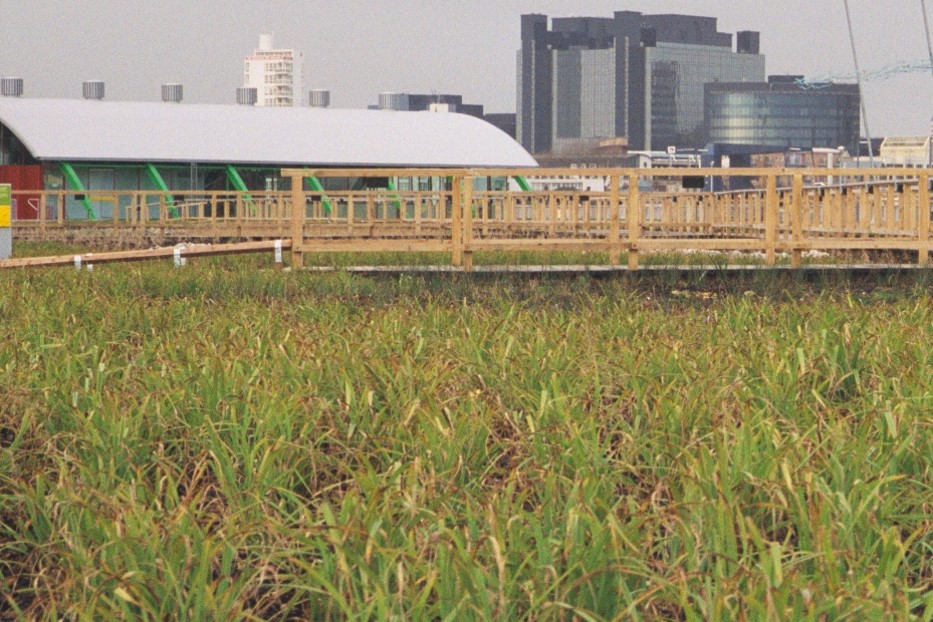Planting in the built environment
Contents |
[edit] Introduction
Planting is the growing or placing of plants in a particular area for a range of purposes, including to:
- Enhance aesthetics.
- Improve wellbeing.
- Improve air quality.
- Filter water.
- Support ecosystems.
- Improve biodiversity.
- Grow crops.
- Create break out or play areas.
- Create sports surfaces.
Planting can be external or internal.
[edit] External planting
External planting is most commonly undertaken as part of landscape design or gardening. Basing a scheme around plants is one of the simplest and most effective ways of transforming an external space.
Design involves drawing up plans for laying out and planting different landscapes, and this will largely be determined by the purpose for which the garden is intended. Some gardens are purely for aesthetic or ornamental purposes, while others can be more functional – growing food, crops, and so on. When setting out external planting it is important to remember that plants will change throughout the seasons.
Other considerations for external planting include:
- How the garden will be used.
- Budget and time constraints.
- Means of access.
- How the garden will connect and/or interact with buildings or other structures.
- Location, climate and exposure.
- Topography.
- Soil type.
- Horticultural requirements.
- The typical lifespan of the plants.
- The size and growth habits of the plants.
- Maintenance requirements.
- Elements of hard landscape and other features that will be included.
- The potential for pests to damage the garden.
- Privacy and security.
For more information, see Garden.
More formal gardens can be quite tidy and geometric, characterised by straight lines and clipped hedges. More informal gardens tend to be characterised by organic curves and more 'relaxed' planting.
Potted flowers and plants offer a flexible approach which can provide colour and vibrancy to an outdoor space as well as being moveable.
[edit] Internal/artificial planting
Natural plants can also be used in interior applications, although consideration must be given to their location so as to ensure adequate sunlight and space. Potted plants are common indoors, but larger planting schemes are possible, including in atrium, conservatories, greenhouses, and so on. Particular consideration must be given to the type of plants used and whether they will survive indoors, as well as their maintenance, watering, replacement and so on.
Artificial plants (also known as ‘replica plants’ or ‘silks’) can offer an alternative for internal (and occasionally external) applications as they enable spaces to look the same regardless of the season and they tend to require less maintenance (aside from occasional dusting).
Artificial plants are most commonly made of plastic mouldings, with more inexpensive varieties offering little variation in sizes and colours due to being mass-produced. However, more expensive products can be made from superior materials such as natural wood and printed silk leaves, with greater variation. Very often, cheaper varieties will not be UV-treated which means their colour will fade when exposed to sunlight, making them less suited for external uses. (Although all artificial plants will fade to some degree due to silk being a natural fibre.)
[edit] Related articles on Designing Buildings Wiki
Featured articles and news
The UK's Modern Industrial Strategy: A 10 year plan
Previous consultation criticism, current key elements and general support with some persisting reservations.
Building Safety Regulator reforms
New roles, new staff and a new fast track service pave the way for a single construction regulator.
Architectural Technologist CPDs and Communications
CIAT CPD… and how you can do it!
Cooling centres and cool spaces
Managing extreme heat in cities by directing the public to places for heat stress relief and water sources.
Winter gardens: A brief history and warm variations
Extending the season with glass in different forms and terms.
Restoring Great Yarmouth's Winter Gardens
Transforming one of the least sustainable constructions imaginable.
Construction Skills Mission Board launch sector drive
Newly formed government and industry collaboration set strategy for recruiting an additional 100,000 construction workers a year.
New Architects Code comes into effect in September 2025
ARB Architects Code of Conduct and Practice available with ongoing consultation regarding guidance.
Welsh Skills Body (Medr) launches ambitious plan
The new skills body brings together funding and regulation of tertiary education and research for the devolved nation.
Paul Gandy FCIOB announced as next CIOB President
Former Tilbury Douglas CEO takes helm.
UK Infrastructure: A 10 Year Strategy. In brief with reactions
With the National Infrastructure and Service Transformation Authority (NISTA).
Ebenezer Howard: inventor of the garden city. Book review.
The Grenfell Tower fire, eight years on
A time to pause and reflect as Dubai tower block fire reported just before anniversary.
Airtightness Topic Guide BSRIA TG 27/2025
Explaining the basics of airtightness, what it is, why it's important, when it's required and how it's carried out.
Construction contract awards hit lowest point of 2025
Plummeting for second consecutive month, intensifying concerns for housing and infrastructure goals.
Understanding Mental Health in the Built Environment 2025
Examining the state of mental health in construction, shedding light on levels of stress, anxiety and depression.
The benefits of engaging with insulation manufacturers
When considering ground floor constructions.
Lighting Industry endorses Blueprint for Electrification
The Lighting Industry Association fully supports the ECA Blueprint as a timely, urgent call to action.
























